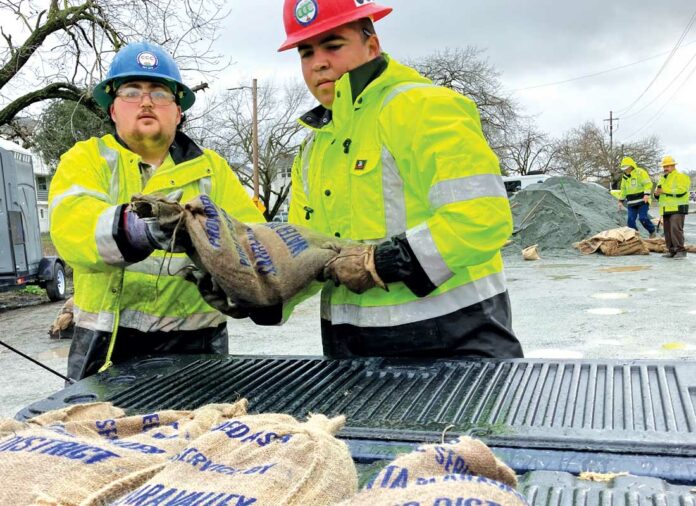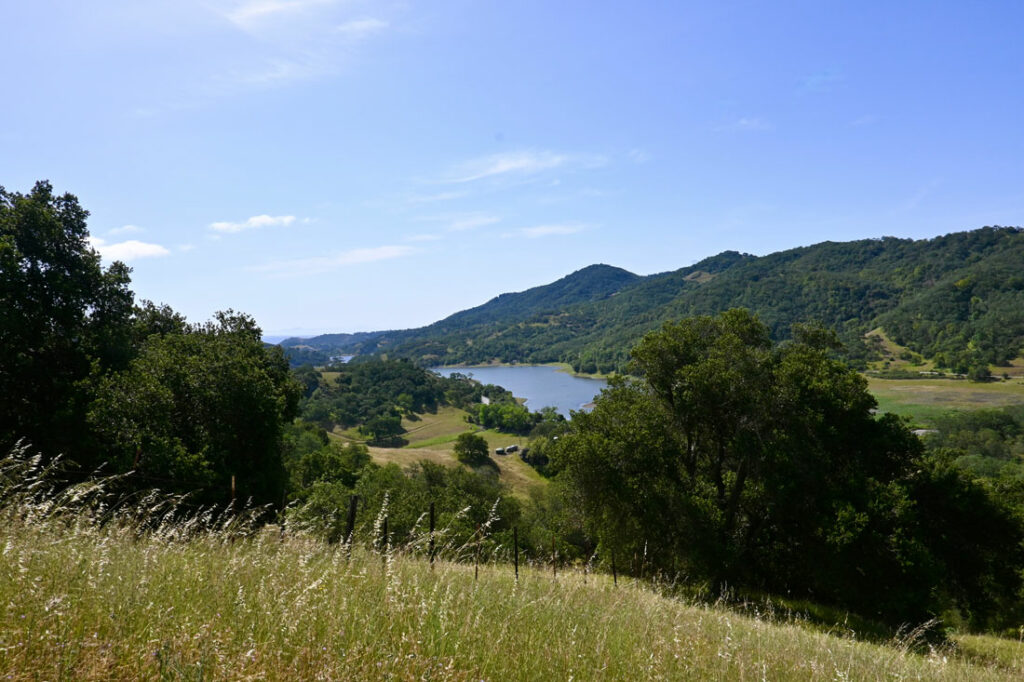
The world this weekend will ring in a new year as 2023 comes to a close and 2024 starts fresh early on Monday morning.
In this week’s edition, the Times takes a look back—in photos and words—at the historic gains, wins, losses and recoveries experienced by Morgan Hill and surrounding communities, and what to expect in the coming year.
Likely many people’s biggest memory of 2023 is the unprecedented volumes of rainfall that continued through January. Atmospheric rivers and days-long drenching storms filled reservoirs beyond capacity, flooded roadways and neighborhoods and knocked out power for thousands of residents at a time. Gusts of wind caused property damages and uprooted trees, creating unforeseen hazards during some of the strongest storms.
On the coldest days, the precipitation was frozen. During a particularly unusual, frigid storm in February, Henry W. Coe State Park in the hills east of Morgan Hill received several inches of snowfall—enough to blanket the entire park.
By the time the rainy season was over in April, Morgan Hill received more than 35 inches of rain, according to Valley Water—well above the seasonal average of nearly 25 inches.

While the winter of 2023-24 has been tame compared to last year’s season, forecasters from the National Weather Service are predicting a particularly wet weekend with up to 1.5 inches expected in some areas in and around Morgan Hill before the end of the day Dec. 30.
Also in 2024, locals will see continued work on Valley Water’s Upper Llagas Creek Flood Protection Project, which is designed to significantly reduce the risk of flooding during heavy rains. In May, crews expect to complete “Reach 8” of the project in downtown Morgan Hill—from Ciolino to West Main Avenue.
The full flood control project, which consists of expanding Upper Llagas Creek’s capacity from north Morgan Hill to San Martin, won’t be finished until the end of 2026, according to Valley Water’s website.
Year of the Panthers
The professional Bay Area Panthers Indoor Football League in January announced they would make Morgan Hill their team headquarters, conducting practices at the Outdoor Sports Center and training at the Centennial Recreation Center for the 2023 season.
On Aug. 5, the team won its first IFL national championship with a victory over the Sioux Falls Storm in Henderson, Nev.
By the fall, Panthers leadership signaled their intent to move their headquarters to another, more populous location in the Bay Area. However, team owner Roy Choi and his crew ultimately decided to keep their permanent practice and corporate home in Morgan Hill.
Although the team still plays home games at the SAP Center in San Jose, local residents and city officials have embraced and supported the Panthers, whose players have been seen participating at community events throughout 2023.
“The Panthers’ players and coaches have been immersed in the community over this period of time volunteering at community gatherings, visiting schools and other events,” Mayor Mark Turner said in August. “We have enjoyed their participation, dedication and commitment to Morgan Hill.”

New fire station in 2024
In September, the city finally broke ground on the construction of the Butterfield Fire Station. The 6,000-square-foot station under construction at 17285 Butterfield Blvd. has been in the planning stages for more than 10 years, and is expected to greatly improve fire and EMS response times in Morgan Hill, according to city officials.
George Huang, Morgan Hill’s fire chief at the time, said at the Sept. 12 groundbreaking ceremony that the event was an “inflection point in history,” representing mutual commitment that the Morgan Hill community and its firefighters have toward each other.
Construction is expected to resume throughout most of 2024, with a projected completion date by the end of the year.

Anderson Dam unknowns
In November, local water ratepayers learned that the total projected cost to complete the Anderson Dam Seismic Retrofit Project had ballooned to about $2.3 billion. That’s more than double what project sponsor Valley Water thought it would cost only a year ago.
Two years ago, the cost of the dam project—required for earthquake protection and improved flood control for the Coyote Creek watershed—was estimated at $648 million.
Crews are still in the process of building the diversion tunnel portion of the project, which started in November. When complete, the 1,736-foot tunnel leading from the base of Anderson Dam to the bottom of the reservoir will give Valley Water vastly more control over Anderson Reservoir’s levels.
Once the tunnel is complete, Valley Water will begin rebuilding the Anderson Dam embankment. That portion of the project is expected to be under construction through 2031—or later if the water district can’t find more funding in the near future.
Photos: More highlights of 2023










